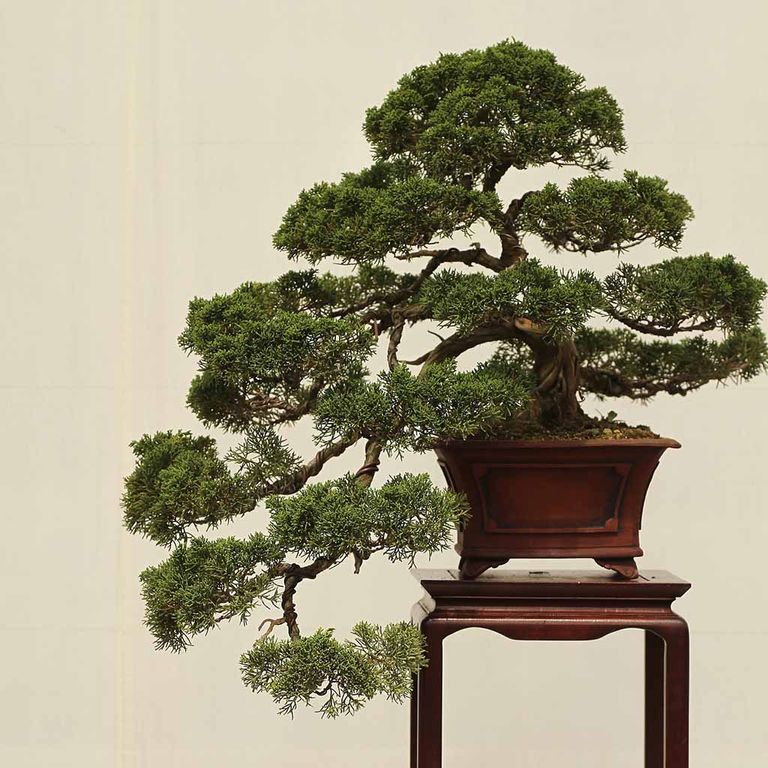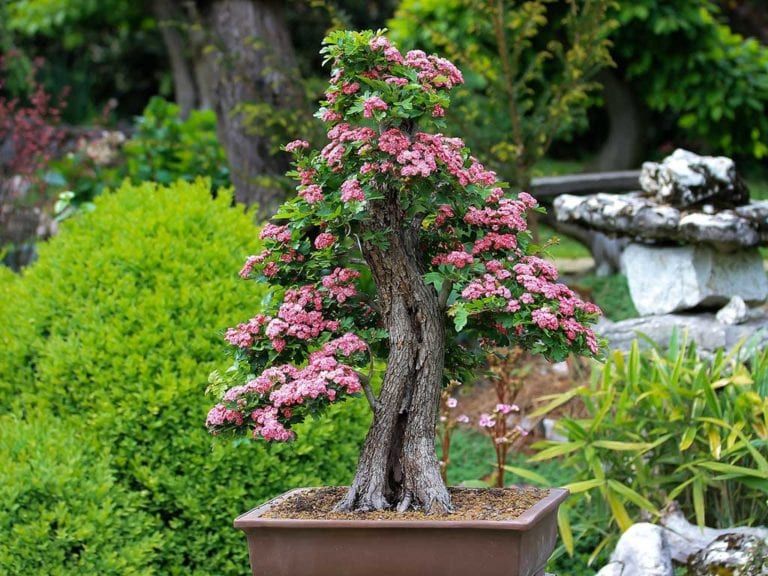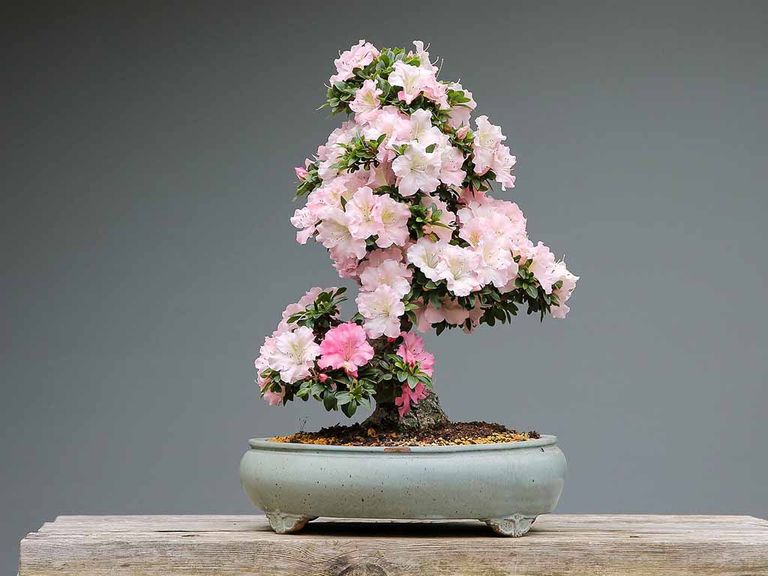
Para definirlo en palabras sencillas, el bonsái es una antigua técnica asiática que combina la técnica del cultivo de plantas con principios estéticos de una manera única.
Esta técnica o arte -como la mayoría prefiere definirlo- tuvo su origen en el Imperio Chino hace 2.000 años.
En ese momento los chinos comenzaron a crear paisajes en miniatura.
Cuanto más pequeña sea la reproducción del paisaje original, más poderoso mágicamente será.
Durante el período Kamakura (hace 780 años) este arte fue copiado y adoptado por los japoneses. Con una variante: en lugar de simular paisajes completos, los japoneses comenzaron a cultivar árboles individuales. Estos árboles son lo que hoy conocemos como Bonsai.
La palabra "bon-sai" en chino. Fuente de la imagen: elaboración propia.
Traducida literalmente, la palabra "bon-sai" significa "plantado en un recipiente".
El significado en los estilos de bonsái.
A lo largo de los años se han desarrollado muchos estilos de Bonsái que tienen un denominador común: evocar situaciones y circunstancias muy parecidas a las que se dan en la naturaleza.
Todos estos estilos tienen algo propio y reflejan la interpretación personal y la creatividad de su creador, lo que significa que los árboles no necesariamente tienen que adaptarse a una determinada forma.
De cualquier manera, es muy importante tener en cuenta que la explicación de cada estilo es importante para tener una comprensión básica de las formas y debe servir como guía para modelar con éxito árboles en miniatura.
Es decir, no puedes crear un estilo de la nada si no estás de acuerdo con los principios básicos que rigen la estética de un bonsái.
Los principales estilos de bonsái.
A continuación veremos los diez estilos de bonsái más comunes, destacando sus principales características.
En realidad los estilos son muchos más, algunos muy sofisticados y para poder exprimirlos en todo su potencial son necesarios años de bonsái.
Por eso, en este post inicial, señalaré solo los más comunes.
O dicho de otro modo los que están al alcance de cualquier aficionado, con un poco (o mucha) de paciencia y buena voluntad.
En artículos posteriores trataré cada uno de estos estilos en detalle.
- Hokidachi.
- Chokkan.
- Moyogui.
- Shakán.
- Kengai.
- Han Kengai.
- Bunjingui.
- Sokan (doble tronco)
- Kabudachi.
- Yose Ue.


To define it in simple words, bonsai is an ancient Asian technique that combines the technique of plant cultivation with aesthetic principles in a unique way.
This technique or art - as most prefer to define it - had its origin in the Chinese Empire 2,000 years ago.
At that time the Chinese began creating miniature landscapes.
The smaller the reproduction of the original landscape, the more magically powerful it was likely to be.
During the Kamakura period (780 years ago) this art was copied and adopted by the Japanese. With a variant: instead of simulating entire landscapes, the Japanese began to grow individual trees. These trees are what we know today as Bonsai.
The word "bon-sai" in Chinese. Image source: own elaboration.
Literally translated the word "bon-sai" means "planted in a container"
The meaning in bonsai styles.
Over the years many Bonsai styles have been developed that have a common denominator: to evoke situations and circumstances very similar to those that occur in nature.
All these styles have something of their own and reflect the personal interpretation and creativity of their creator, which means that trees do not necessarily need to adjust to a certain shape.
Either way it is very important to keep in mind that the explanation about each style is important to have a basic understanding of the shapes and should serve as guidelines for successfully modeling miniature trees.
That is, you cannot create a style from nothing if you disagree with the basic principles that govern the aesthetics of a bonsai.
The main bonsai styles.
Next we will see the ten most common bonsai styles, highlighting its main features.
Actually the styles are many more, some very sophisticated and to be able to squeeze them in their true potential, years of bonsai are necessary.
For this reason, in this initial post, I will point out only the most common ones.
Or put another way those who are available to any fan, with a little (or a lot) of patience and goodwill.
In subsequent articles I will deal with each of these styles in detail.
- Hokidachi.
- Chokkan.
- Moyogi.
- Shakan.
- Kengai.
- Han Kengai.
- Bunjingi.
- Sokan (double trunk)
- Kabudachi.
- Yose Ue.

Congratulations, your post has been curated by @r2cornell-curate. Also, find us on Discord
Felicitaciones, su publication ha sido votado por @r2cornell-curate. También, encuéntranos en Discord
Thank you for curating and voting my content @r2cornell-curate & @abiga554.